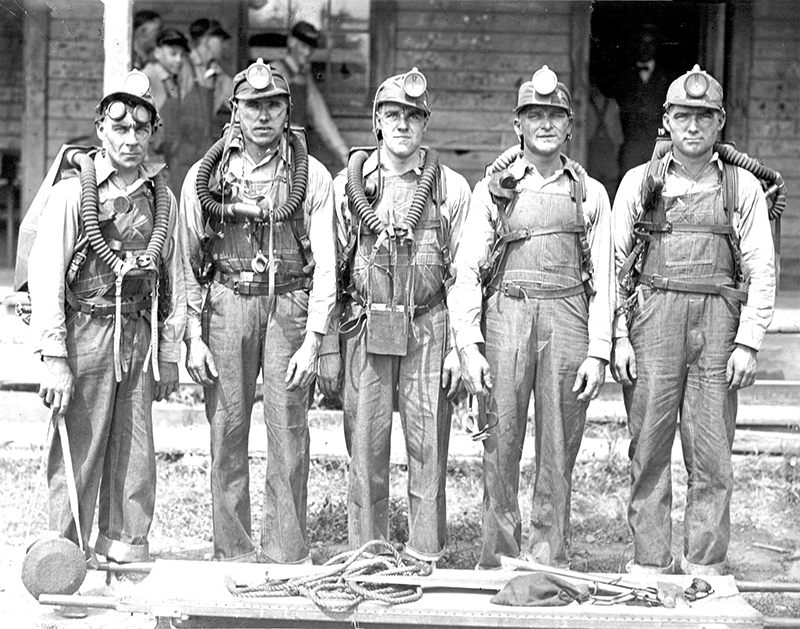First Aid and Mine Rescue Teams to Carbonado, Washington

By Bill Kombol
November 13, 2018 - On August 9, 1924 six coal-mining towns sent 25 first aid and mine rescue teams to Carbonado for what was deemed Washington’s most successful demonstration ever staged up to that time.
About 1,000 persons, most of them coal miners and their families witnessed the contests and cheered competitors with all the enthusiasm of spectators at a big field and track meet. News of the big event was covered in the Seattle Times the following day.
Though Bellingham won the coveted Mine Rescue trophy, Newcastle captured first place in three events and second in another two for overall honors. Shown here is the Newcastle Rescue Team consisting of B. F. Snook, Captain; George Hashu, Walter Clark, Joe Ausberger, and George S. Munson. The men are equipped with Gibbs oxygen breathing apparatus sold by Mine Safety Appliance Co. of Pittsburgh.
According to a 1921 Keystone Mining Catalog, “The Gibbs is an apparatus that provides a constant supply of oxygen to replace the oxygen consumed in sustaining life. It also carries an absorber to render harmless the carbon-dioxide exhaled from the lungs.”
One of the best-known breathing devices was the Draeger. Designed in 1903 by Bernhard Draeger of Lubeck, Germany, it consisted of an airtight helmet, breathing bags, and a back carriage that included an oxygen cylinder and potash cartridge.
Both devices allowed rescue crews to enter smoked-filled mines after an explosion where oxygen might be limited or tunnels filled with toxic gases.

Newcastle Rescue Team consisting of B. F. Snook, Captain; George Hashu, Walter Clark, Joe Ausberger, and George S. Munson. The men are equipped with Gibbs oxygen breathing apparatus sold by Mine Safety Appliance Co. of Pittsburgh.
This image, which appeared in the December 13, 1998 “Hidden Past” section of the Seattle Times, comes courtesy of JoAnne Matsumura, an Issaquah historian and collector of mining photos.

